
The New Guinea big-eared bat or Papuan big-eared bat,, is a vesper bat endemic to Papua New Guinea. It is listed as a critically endangered species due to ongoing habitat loss. It is the only known member of the genus Pharotis, which is closely related to Nyctophilus.

Megadermatidae, or false vampire bats, are a family of bats found from central Africa, eastwards through southern Asia, and into Australia. They are relatively large bats, ranging from 6.5 cm to 14 cm in head-body length. They have large eyes, very large ears and a prominent nose-leaf. They have a wide membrane between the hind legs, or uropatagium, but no tail. Many species are a drab brown in color, but some are white, bluish-grey or even olive-green, helping to camouflage them against their preferred roosting environments. They are primarily insectivorous, but will also eat a wide range of small vertebrates.
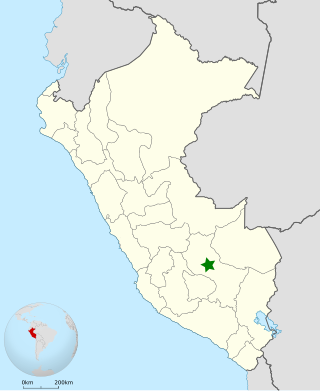
The Incan little mastiff bat is a species of bat in the family Molossidae, the free-tailed bats. It belongs to the subgenus Micronomus.

The disk-footed bat is a species of vesper bat in the Vespertilionidae family found in Laos and Myanmar. The disc-footed bat was recorded in 2021 in the Lailad area of the northeastern Indian state of Meghalaya, near the Nongkhyllem Wildlife Sanctuary. It is about 1000 km west of the bat's nearest known habitat, Myanmar.

The Surat helmeted bat is a species of vesper bat. It ranges from Thailand and Laos west to Nepal.
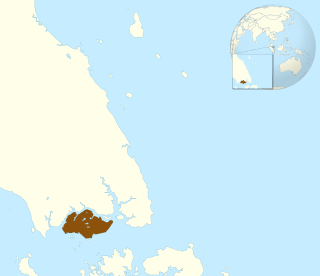
The Singapore whiskered bat is or was a possible species of vesper bat endemic to Singapore. No specimens have been found since its original scientific description in 1840 by Dutch zoologist Coenraad Temminck.

The Kolar leaf-nosed bat, or leafletted leaf-nosed bat is a species of bat in the family Hipposideridae. It is endemic to India. Its natural habitats are subtropical or tropical dry forests and caves. It is found in only one cave in India, and its population is less than 200 individuals.

The lesser great leaf-nosed bat or lesser roundleaf bat is a species of bat in the family Hipposideridae. It is found in Japan. Its natural habitat is temperate forests. Human interference has caused rapid habitat destruction, this has caused the bat to become endangered.
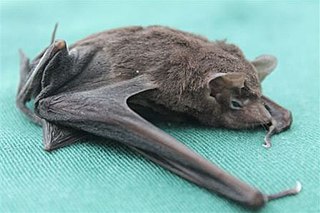
The Seychelles sheath-tailed bat is a sac-winged bat found in the central granitic islands of the Seychelles. They are nocturnal insectivores that roost communally in caves. The species was previously abundant across much of the archipelago, but has since seen a substantial loss of habitat. The International Union for Conservation of Nature has listed the species as being critically endangered, due to population decline. This is mainly due to an increase in land development and the introduction of invasive species.
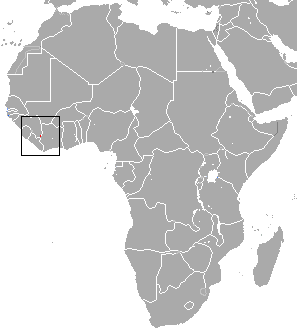
Lamotte's roundleaf bat is a species of bat found only at Mount Nimba on the border of Côte d'Ivoire, Guinea and Liberia. It is critically endangered.

The Fijian monkey-faced bat Also known as Fijian flying fox or Fijian flying monkey, is a megabat endemic to Fiji. It was discovered in old-growth cloud forest on Des Vœux Peak, the second highest mountain peak on the island of Taveuni by William and Ruth Beckon in 1976, and is Fiji's only endemic mammal. It has recently been transferred from Pteralopex to its own monotypic genus Mirimiri.
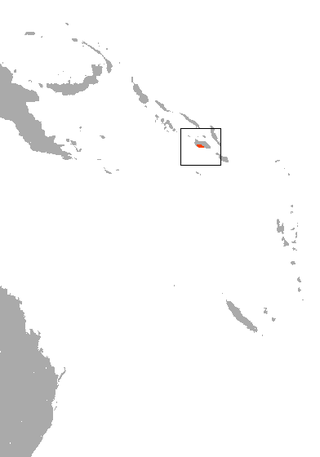
The montane monkey-faced bat or montane flying monkey is a megabat endemic to the Solomon Islands. It is listed as a critically endangered species. Due to its imperilled status, it is identified by the Alliance for Zero Extinction as a species in danger of imminent extinction. In 2013, Bat Conservation International listed this species as one of the 35 species of its worldwide priority list of conservation. Only one individual has ever been found.

The Guadalcanal monkey-faced bat or Guadalcanal flying monkey is a megabat endemic to Solomon Islands. It is listed as an endangered species. In 2013, Bat Conservation International listed this species as one of the 35 species of its worldwide priority list of conservation.

The greater monkey-faced bat or greater flying monkey is a megabat endemic to Solomon Islands, Bougainville, in Papua New Guinea, and nearby small islands. It is listed as a critically endangered species and the population is decreasing. It is the largest monkey-faced bat.

The Florida bonneted bat or Florida mastiff bat is a species of bat in the genus Eumops, the bonneted bats or mastiff bats. Until recently, it was classified as a subspecies of Wagner's bonneted bat. It is endemic to southern Florida in the United States. This species has one of the smallest geographical distributions of any New World bat. It has been called "one of the most critically endangered mammal species in North America". It is protected under the Endangered Species Act.
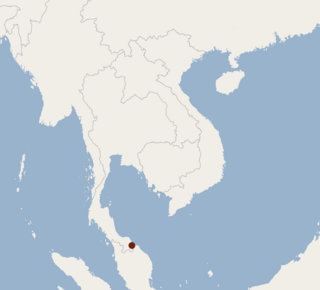
The Bala tube-nosed bat is a critically endangered species of bat found in Thailand.

The Kachin woolly bat is a species of bat found in Southeast Asia.
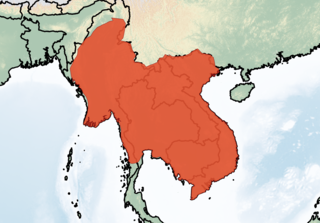
Rhinolophus microglobosus is a species of horseshoe bat found in Southeast Asia.

Hipposideros atrox, commonly known as the lesser bicolored leaf-nosed bat, is a species of bat found in Southeast Asia. Originally described as a subspecies in 1918, it was recognized as a full species in 2010. It uses echolocation to navigate and find prey, and roosts in caves during the day.

Pendlebury's roundleaf bat is a species of bat in the family Hipposideridae. It was previously considered a subspecies of H. turpis, but has now been raised to full species level. It is endemic to Thailand and is found in limestone karst areas.





















